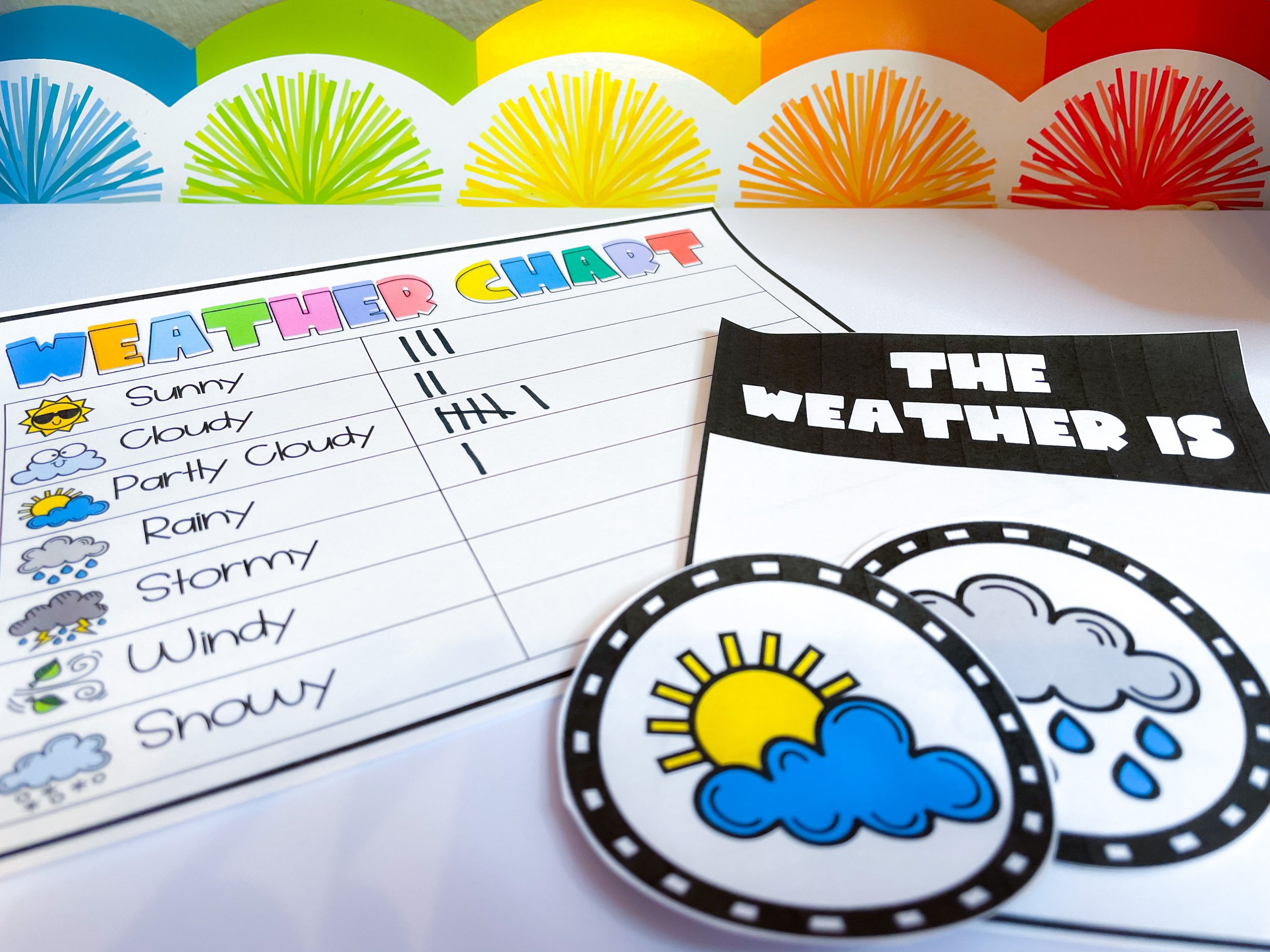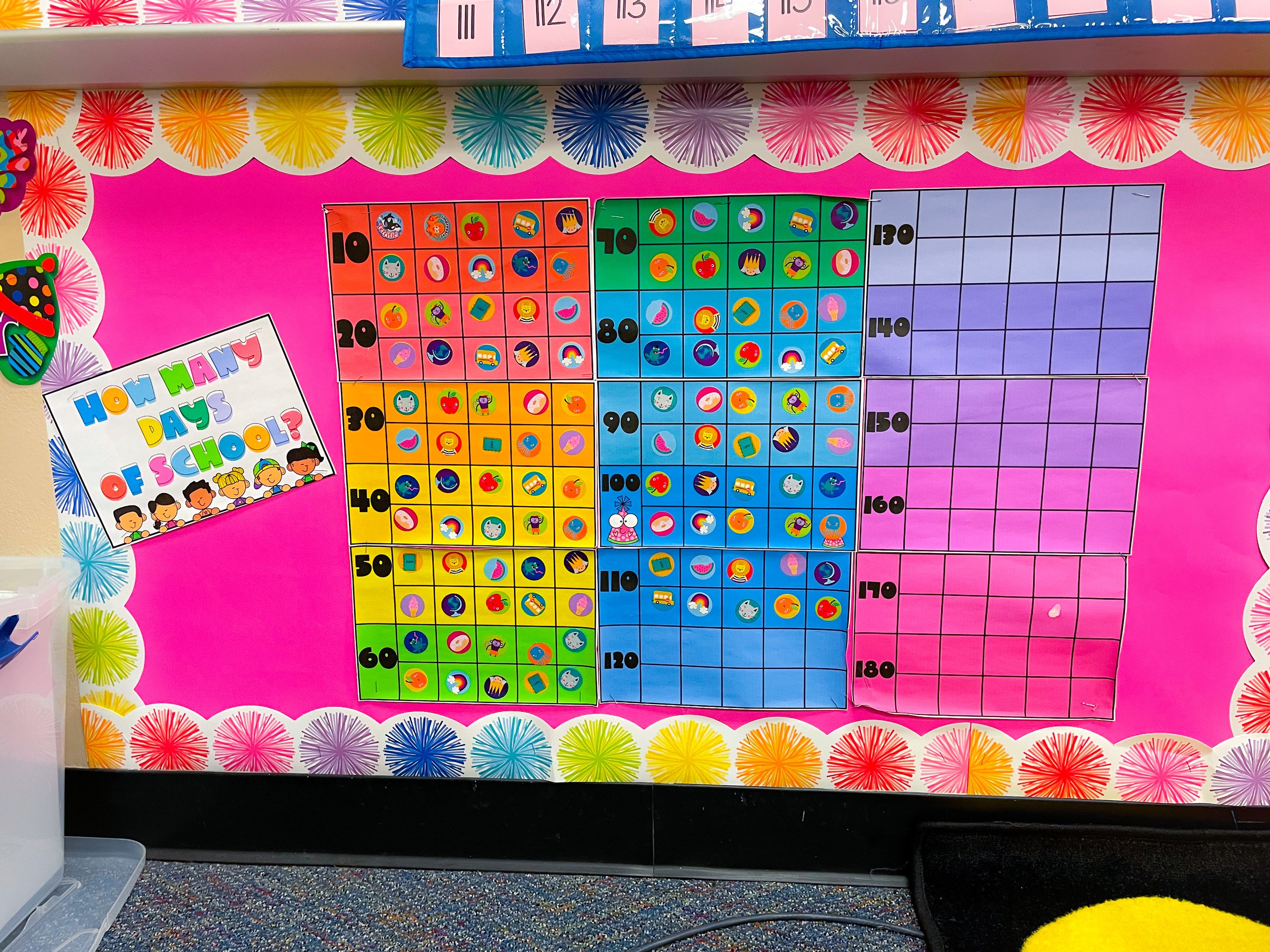Why I’m Not Getting Rid of “Calendar Time” in First Grade
At one point, I worked for a school district that told us “calendar time wasn’t really appropriate for First Graders anymore,” so they were removing it from our master schedule. My response to that was “on what planet?!” Listen y’all, I’m a rule follower until the rules make no sense. At that point, I become a “I’m going to close my door and do what’s best for my kids, not what’s best according to someone who hasn’t spent a full day in a First-Grade classroom since 1991” kinda teacher. That’s just the honest truth. On what planet is 10-15 minutes of math-enriched, engaging, calendar-focused content not appropriate for a growing 6-year-old? Not the one we’re on, I’ll tell you that much!
I think a lot of people think of “calendar time” being a time where we’re just singing songs about the days of the week and months of the year, without any real depth and they think it’s all “totally Kindergarten.” But did y’all know that only 19 out of the 50 states require Kindergarten?! That means I’ve had many years where I get students that have never gone to Pre-School or Kindergarten, and their first time in a classroom setting is the second that they walk through my door. That also means that there’s a huge chance that those children have never even heard of the days of the week or the months of the year. So, to assume that 6 and 7 year olds don’t need exposure to that (even if they do know those things) is absolutely insane to me.
That being said, I’ve found a way to make sure my calendar time is quick, meaningful, and engaging. It takes a while to “get into the groove” at first while your students learn the routine, but once they know the routine, they could easily run calendar time themselves. Let me show you!
Not all of my calendar components are shown in the image above because I didn’t have the wall space, I did some of them digitally (from my digital calendar pack). You can grab my Physical Calendar Kit HERE and my Digital Calendar Kit HERE.
A few disclaimers before I begin telling you about what we do during calendar time:
*The calendar/numbers and months are from my Teachers Pay Teachers store HERE.
*The place value pocket chart is from Carson Dellosa (exact one is not available anymore so I linked a similar one). I like using an actual pocket chart, but my calendar kit comes with a chart and place value blocks that can be cut out (and you can glue magnets on the back to make them magnetic!)
*My 120 chart is from Amazon, and my rainbow pocket chart numbers can be found on my Teachers Pay Teachers store HERE.
Start with Morning Meeting
I begin our calendar/morning meeting time by beginning with a quick morning meeting. I follow the weekly prompt guide above and it can be found as a freebie in my Teachers Pay Teachers store HERE. We come to the rug and sit around the edge in a circle. I remind them about rug expectations and listening to others as they share. Then we get started. As the year goes on, students know the pattern for each day. They’ll know if it’s a Memory Monday, or a Tell Us Tuesday, and they’ll know what is expected of them. I do let each student share each day. I give them 10 seconds to get their answer in their head, and then I start by giving one student our microphone (linked here) and they must share their answer right away. If they are taking too long, I will say “pass please” and they must pass the microphone on. It truly does go fast, and we keep it moving. On Monday, they’re sharing 3 words, on Tuesday they’re sharing 1 word, and on Wednesday, Thursday, and Friday they are sharing a quick sentence stem.
This is a good way to check in with students briefly each day. Of course students do not have to share if they don’t want to.
Calendar Time
1. We begin by flipping our “helper hearts” to see who our helpers of the day will be. I just die-cut hearts, wrote a child’s name on each one, and hung them on a binder ring. They hang on the board, and I flip it each day to see who our helpers for calendar (and the rest of the day) will be.
2. I have some transparent color tiles that are basically sheets of thin colored plastic (I’ve had them forever and got them from a retired teacher) and I use one of them to hang over the current date. We say “Today is DAY OF THE WEEK, MONTH, DATE, YEAR” together out loud each day as we change the date. I make a tally using an expo marker on our Monthly Tally chart and we quickly count by 5’s to see how many days we have been in school that month. Then I have my helper hearts ask the rest of the class (sitting on the rug) what today is, what yesterday was, and what tomorrow will be. I let helper hearts hang our days of the week up on the calendar board as they ask our class, and the class responds. I have all my calendar pieces laminated and hung with Stikki Clips (linked here) because it’s easy for students to slide things in and out of the clips.
3. After this, we sing one calendar song from YouTube. I choose a different topic each day, but I have the same 7 songs on rotation. Topics are: days of the week, months of the year, weather, seasons, counting by 2’s, counting by 5’s, counting by 10’s. I let students stand up and dance/sing with the song. All the songs that I use are from Scratch Garden or Harry Kindergarten.
4. Next, I have my helper hearts ask the class what the weather is. Students then respond with the weather and the helper hearts switch it out on the board. Then one of the helpers uses an expo marker on our Weather Tally Chart to track the weather data for today. I have students on the rug turn and talk to generate a question about the tally chart (how many more days have been rainy than sunny? Etc.)
5. After recording weather, we count how many days we have been in school. We do this in 3 ways:
- On the 10 frames: We count by tens until we get to the day of school that we are on. We add a sticker into the frames. Students generate a question about the 10 frames (how many more days until we get to day 30? Etc.)
- On the Place Value Pocket Chart: We add a “unit” block for the new day. There are a lot of math convos that take place here about when to bundle the units into a stick of ten, etc. When we make a bundle of 10 (every 10 days) we stand up and do a little “bundle dance.” We will count all the ten sticks and units that are in our chart, and we will write the number in standard form (digits). We focus in on the “VALUE” here. Let’s say that we have 8 tens and 3 ones in our chart. I’ll write 83. I’ll ask them what the value of the 8 is, and what the value of the 3 is, and then I’ll ask them what the COMBINED value is. (80 is 8 tens, 3 is 3 ones, and 80 and 3 is 83.) We’ll write it in expanded form as well. This is crucial to their skills in place value development. I find that by doing this, place value is a piece of cake for students because we do it every.single.day.
- On the 120 Chart: I use one of those transparent colored tiles and move it into the correct day of school. Then I ask students to share with me what’s 1 more than that number, 1 less, 10 more, and 10 less. I use the transparent colored tiles to make the cross-like formation around the number so that students can see the numbers. This helps with number sense since we also do this every single day.
6. After counting the days, we graph how many students are absent today, and we fill in a part/part/whole chart with the numbers and write an equation to match. This is good exposure to addition and subtraction.
7. At the end of our calendar time, I pull out my deck of skip counting cards, and we do what one of the cards says. There are different cards in the stack such as: "skip count by 5’s to 120 in a monster voice” or “skip count by 10’s to 120 in a whisper voice” etc.
8. My tooth graph isn’t talked about every single day. Only when a child loses a tooth. My kids are allowed to grab a crayon and color in a space on the graph when they lose a tooth.
*****I know it sounds like a lot, but by the time you get the routine down, you’ll be able to run through it in 10-15 minutes. I just firmly believe that we should be exposing students to calendars, days of the week, months of the year, weather words, skip counting, place value, 10 frames, and graphing DAILY. All of these concepts are used daily in adult life. Students should be able to use and understand the concept of a calendar and all the components that surround it at an early age.*****
Below, you can see a video of how the Digital Calendar Routine Kit works. It should be accessed in PowerPoint (it hasn’t been tested in Google Slides or anything else). This is a great alternative to use if you still want to incorporate daily calendar into your routine, but you don’t have the wall space.
Wishing you a fabulous year with meaningful calendar routines and conversations with your “littles.” They’re so lucky to have you!











